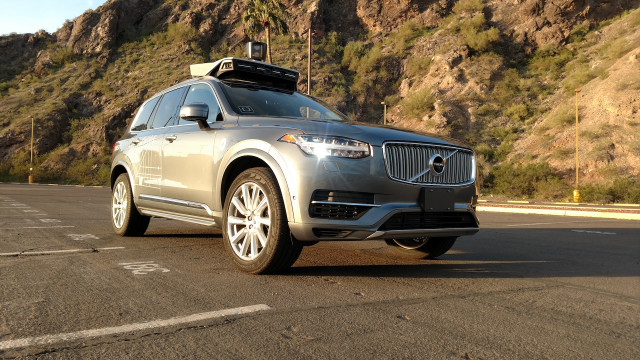Video from Uber self-driving car that killed Arizona woman asks more questions than it answers
Arizona officials on Wednesday released grainy footage of the Uber self-driving car crash that killed a 49-year-old woman.
The video may pose more questions than it answers.
The video stops moments before the impact that killed 49-year-old Elaine Herzberg. It depicts a dark night, a figure that emerges a couple of seconds before the crash, and a seemingly distracted human safety driver, Rafaela Vasquez.
Tempe Police Vehicular Crimes Unit is actively investigating
— Tempe Police (@TempePolice) March 21, 2018
the details of this incident that occurred on March 18th. We will provide updated information regarding the investigation once it is available. pic.twitter.com/2dVP72TziQ
At best, the video is inconclusive on what—if anything—could have prevented the crash. At its worst, it brings up dozens of questions that safety officials will have to answer in upcoming months regarding self-driving vehicle testing, regulation, and liability in crashes.
Uber released a statement Monday and Wednesday and said its fleet of self-driving cars in Pittsburgh, Toronto, San Francisco, and Tempe, Arizona would be halted pending the investigation.
Our hearts go out to the victim’s family. We’re fully cooperating with @TempePolice and local authorities as they investigate this incident.
— Uber Comms (@Uber_Comms) March 19, 2018
Uber hasn’t commented on what, if anything, its self-driving car’s sensors recorded that night. The company also hasn’t said if all systems were functioning properly, or if it was testing a previously unreported sensor array.
A spokesman for Volvo told Motor Authority on Wednesday that they "are aware of the incident and have seen the disturbing and upsetting video. Our thoughts remain with Elaine's family and friends. Uber is cooperating with local and national authorities and Volvo is assisting in these investigations."
What we can and can't see
Most companies developing self-driving software closely guard how their sensor data is interpreted by computers in the car, and it’s unlikely that Uber would disclose much publicly outside of a court order.
Based on information they’ve publicly shared, and information Volvo has shared about the stock XC90 SUV driven that night, it’s clear that one—or more—safety systems malfunctioned, or were disabled in the crash.
Volvo has made its City Safety suite of advanced safety technology standard on all XC90s since 2016. That suite includes automatic emergency braking with large animal detection. In 2016, the IIHS rated the system as “Superior” and noted that the system avoided a collision with a wall at 25 mph.
At speeds up to 62 mph, Volvo’s City Safety system should help steer a car out of a collision with a large animal, according to the automaker. Reports say the self-driving car by Vasquez was traveling at 38 or 40 mph when it struck Herzberg.

Email This Page